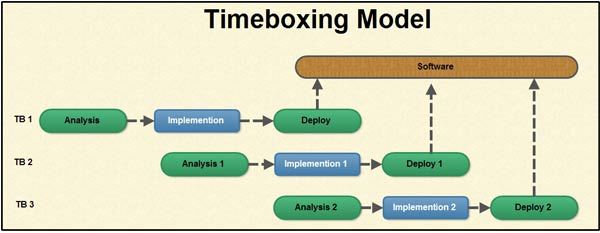In time boxing model, development is done iteratively as in the iterative enhancement model. However, in time boxing model, each iteration is done in a timebox of fixed duration. The functionality to be developed is adjusted to fit the duration of the timebox. Moreover, each timebox is divided into a sequence of fixed stages where each stage performs a clearly defined task (analysis, implementation, and deploy) that can be done independently. This model also requires that the time duration of each stage is approximately equal so that pipelining concept is employed to have the reduction in development time and product releases.
There is a dedicated team for each stage so that the work can be done in pipelining. Thus, stages should be chosen in such a way that each stage perform some logical unit of work that becomes the input for next stage.
In addition to the advantages of iterative model, time boxing model has some other advantages too. Various advantages and disadvantages associated with timeboxing model are listed in Table.
Table Advantages and Disadvantages of the Time boxing Model
Advantages | Disadvantages |
|
|

 Dinesh Thakur holds an B.C.A, MCDBA, MCSD certifications. Dinesh authors the hugely popular
Dinesh Thakur holds an B.C.A, MCDBA, MCSD certifications. Dinesh authors the hugely popular